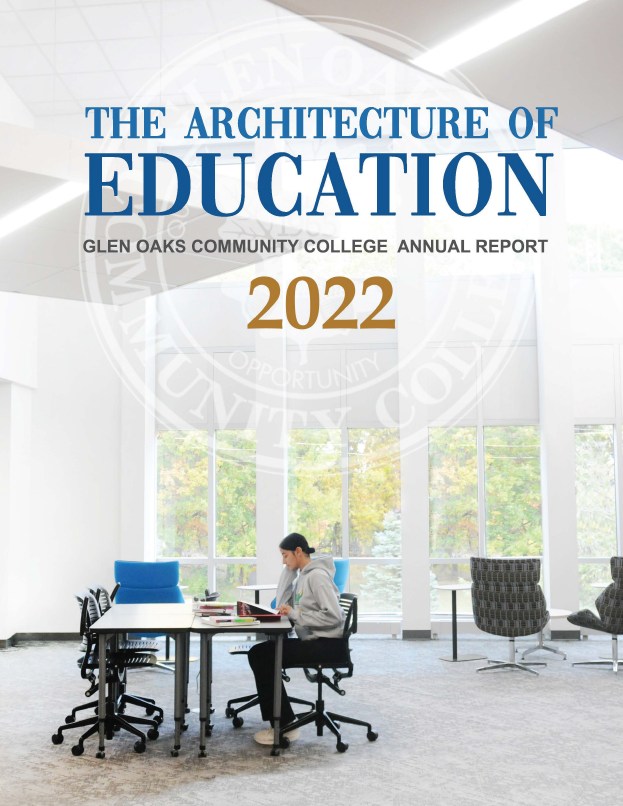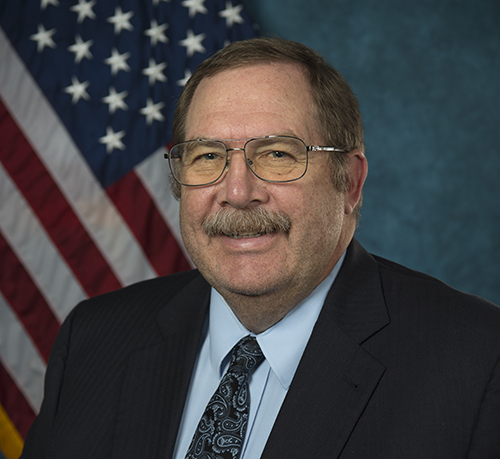Music scholarship led to dreams and aspirations in an aerospace career
It was a Glen Oaks music scholarship that became the determining factor for Loran “Larry” Wingfield to pursue his dreams and aspirations. Those dreams, lots of hard work, and an intensely high energy level ultimately led him to a 33+ year career working for the U.S. Department of Defense Missile Defense Agency.
Born in Sturgis, and raised in a number of Southwest Michigan towns, as the family moved around quite a bit, Larry attended junior high in Burr Oak, and high school in Centreville, graduating in 1981.
He chose to accept that music scholarship, play his trombone and baritone in the orchestra, sing in the choir, and play forward on the Viking basketball team — as it was all a better financial package than the University of Michigan could offer.
His quest? “I was 7-years old when NASA landed on the moon and my mom said ever since then I was intrigued by the whole space program — wanting to be an astronaut. Unfortunately, when I graduated from high school, I was too tall to fit astronaut requirements — so I ended up starting down the academic path for aerospace engineering to pursue a space related career.”
“The late Donald VanZuilen, professor of math and science, probably influenced me the most academically,” said Larry, who enrolled in three semesters of calculus and two of his physics classes. “One of the most memorable things he had us do was an experiment to show how gravity effects all things the same, and a few of us set up an experiment in the auditorium where we launched a wood skee-ball from a large crossbow at a stuffed monkey we dropped from the ceiling at the exact time we shot the ball by use of an electromagnet. We hit it three straight times! Dr. VZ was exceptional at demonstrating the theory in simple to understand ways.
Wayne Moss was my other science teacher and actually I took his chemistry class during my senior year in high school since I had completed all of Centreville’s available science classes by my junior year. I took the class with my sister, Lorena, who was a year ahead of me and specifically I remember how challenging his final exam lab experiments were.
Basketball required a lot of training time, and Larry recalls training with Tom Soper, who also taught English, and Ken Schuler the basketball coach. Keeping on top of coursework, attending classes, workouts, practices, and game schedules was a challenge especially with working part-time jobs. “I had my commercial driver’s license, so I actually ended up driving the bus for the basketball team – and while the rest of the team could do homework on the bus ride — I obviously couldn’t as I was driving the team all over Michigan and Indiana for games.”
And he certainly could have used that time to tend to his studies as his course load was demanding. “Every semester, I had to get special approval from the dean of academics to take the amount of credit hours I was taking,” said Larry. The least amount of credit hours he took was 19 — and it was usually 20 or 21 – all this in addition to driving a garbage route for his dad’s business, working at Centreville High School in the evenings, and de-tasseling corn in the summer.
But the best memory of his time at Glen Oaks? “I met my wife, Alise Ritzer,” said Larry, “we were in the choir and orchestra together, and we spent a lot of time hanging out on the concourse. We got married in 1983.”
Graduating with honors from Glen Oaks in 1983 with an Associate of Science, Larry transferred to Tri-State University (now Trine), with a half academic scholarship, to study aerospace engineering. While there, he also worked second shift at Angola Die-cast, an aluminum die-cast company. He admits not sleeping a lot during his college years.
But it was the engineering co-op program that connected Larry with Wright Patterson Air Force Base in Dayton, Ohio, where he started in 1986. With his Bachelors of Science degree in Aerospace Engineering and this job experience, it led the way to a full-time job upon graduation in 1988. “I was a civilian air force engineer at Wright Patterson for a little over six years where I worked on a number of missile programs. While there I also took classes at the Air Force Institute of Technology,” added Larry.
One of his favorite accomplishments? – Larry was part of the team that worked on the National Aerospace Plane X-30 – a joint effort by NASA and the Department of Defense. The project explored aerospace vehicles for hyper-sonic cruise and access to space.
“I particularly enjoyed working on the X-30 early on in my career – that’s what really got me interested in the hyper-sonic work,” said Larry. “It was all about pushing the state of the art in the hyper-sonic technology.”
His second job was at Arnold Air Force Base in Tullahoma, Tennessee, where he managed the Hyper-sonic Branch of the Space and Missile Test Division, primarily doing missile defense related work.
“At the time, President Ronald Reagan had started the Strategic Defense Initiative,” said Larry. “That set off a number of missile defense programs. I was really attracted to working “defensive” programs as opposed to “offensive” programs—so rather than focusing on mutually assured destruction – my focus now became one of defending our Allies and Homeland by intercepting foreign country missile threats.
After seven years in Tennessee, the next stop for Larry was the Pentagon. “It started out that this was going to be a missile defense project assignment for a year,” said Larry, “but I ended up accepting a full-time job there as division chief for the Test Resources Ground Test Division. I never thought I would want to work and live in the DC area – the daily commute was three to four hours – that was the hardest part of the job.”
He spent nine years at the Pentagon including multiple assignments in test work, deployment of US and allied missile defense capabilities and other classified work. Although still working in missile defense – Larry and his wife moved to Huntsville, Alabama in 2008 when his division relocated there. During this time, Larry’s work took him overseas — working on a number of sites in the Middle East, Turkey, Romania, Poland and Japan and a couple of sites back in the US.
Prior to retirement, Larry was the director for program management and integration for the Ground-Based Midcourse Defense program, providing oversight of projects, cost estimates and budgets, and contracts. His leadership and guidance helped to ensure ballistic missile defense systems were ready and on plan.
Larry retired from the Missile Defense Agency in 2019, and received the Pinnacle Award for Excellence – the highest award that the agency awards its employees. “I received a number of awards for leading projects throughout my career, but this was the most significant and it was for work done on a recent test flight and other homeland defense activities.”
But retirement for Larry didn’t last long – today he works full-time for Gray Analytics, a technical consulting firm in Huntsville, where he provides consultation and technical support for missile defense.
Larry’s advice for today’s students: “Don’t give up – just follow your dreams — it took me seven years to graduate with a bachelor’s degree. If it wouldn’t have been for the music scholarship, it would have been hard for me to get through the first two years of school at Glen Oaks. That helped me get a half scholarship at Tri-State — and the engineering co-op job helped me pay for the rest of my education – which led to reaching my aerospace dreams.”


